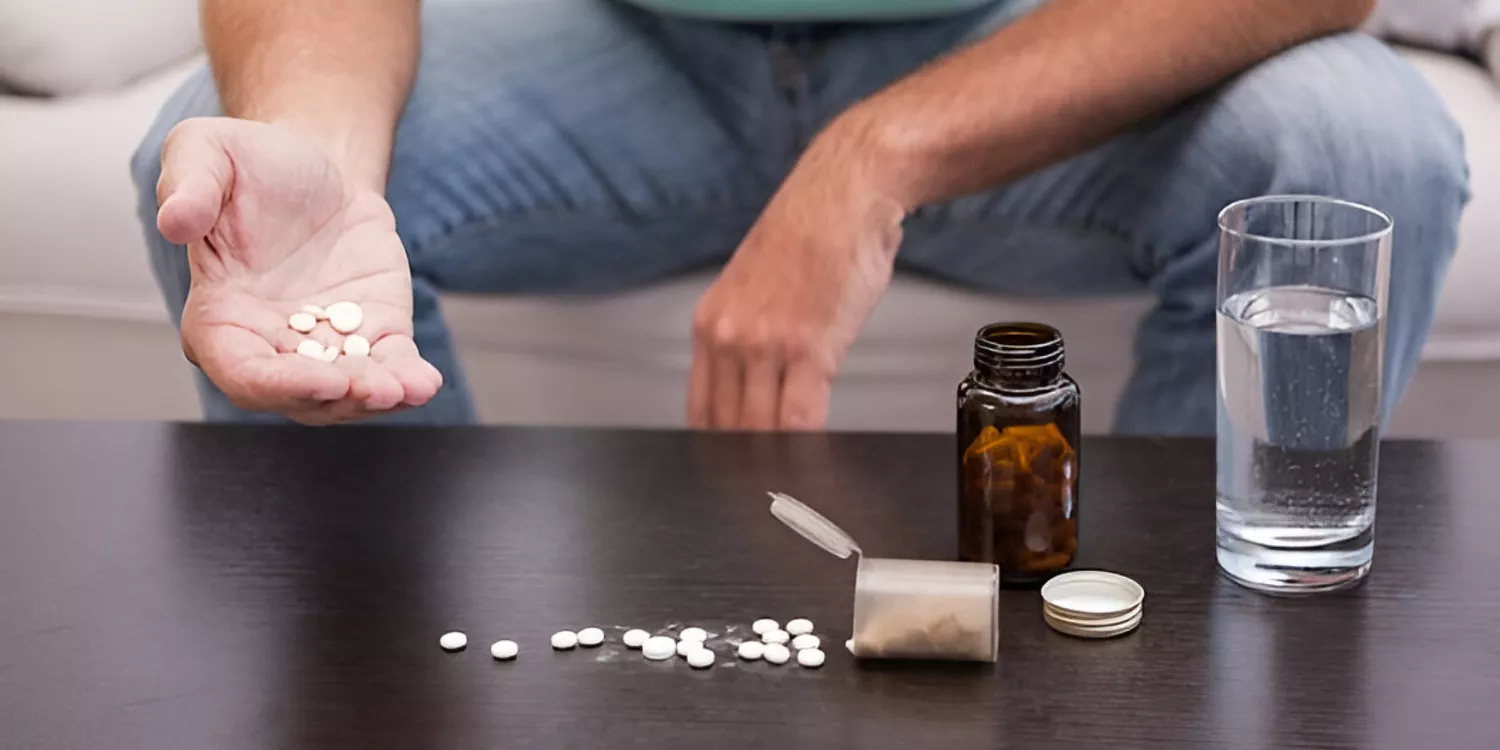Dealing with addiction to alcohol can feel very lonely as well as overwhelming. Vivitrol, which is an Naltrexone in an injectable form, gives hope. This medication aids in minimizing cravings besides the risk of returning to old habits or relapsing in a complete treatment program. Let us begin and take a look at all the important details related to Vivitrol injection for Alcohol:
Vivitrol Injection for Alcohol Addiction: All About the Naltrexone Injection
Vivitrol injection for alcohol, which is also referred to as a Naltrexone injection, is a popular form of medication which professional doctors use to aid individuals battling opioid use disorder, or dependence on opioids or alcohol. This particular treatment for alcohol or opioid dependence goes straight into a muscle, which turns it into Vivitrol, which is an extended-release form.
The Food and Drug Administration of the United States of America has offered its seal of approval for administration to those individuals who are struggling with intense drinking or misuse of opioids.
The Naltrexone injection works by stopping the high or acting as a blockade against the euphoria which comes from consuming any type of opioid as well as alcohol, thereby helping patients in their path towards sobriety without the extreme cravings. In simpler terms, it blocks the effects of opioids. Since it does not offer pleasure from usage of substances, patients find it way easier to remain on their recovery path without needing to continuously fight the intention of relapse.
Naltrexone and Its Mechanism in the Treatment of Alcohol Dependence
Before starting Vivitrol treatment or using Vivitrol, it is important to know how Naltrexone works. Naltrexone functions by latching itself to specific spots in the patient’s brain which are referred to as opioid receptors. These are locations where both drugs as well as alcohol usually have their effect. By having a proper hold of the said receptors in the brain, Naltrexone prevents alcohol from triggering the regular signals of pleasure in the brain.
This action is very important primarily because it reduces the cravings and helps individuals to say no to drinking. It may be possible for them to still drink. However, they will not feel a similar kind of satisfaction or happiness from alcohol as they used to. As a result, preventing relapse becomes more likely after starting and finishing a treatment program. Moreover, this form of medication plays a major role by reducing the craving for alcohol during withdrawal.
Common Naltrexone Side Effects | Vivitrol Side Effects
Like all other forms of medications which are used to treat alcohol addiction, Naltrexone also has the potential to cause certain side reactions or side effects every patient should be wary of. Here is a look at some of the possible side effects of Vivitrol or Naltrexone injection:
- Feeling dizzy or having headaches are two common things which may happen after a patient receives Naltrexone injections. Patients may also feel very lightheaded or experience low to intense headaches.
- Muscle cramps as well as stomach cramps may occur in patients who used Vivitrol injection, causing irritation and discomfort. Such cramps may range from mild to very intense.
- A plethora of individuals report occurrences such as nausea or vomiting undergoing treatment. This may last between two to three hours, to 2 to 3 days or more.
- Vivitrol may cause pain in the joints, thereby making movement uncomfortable.
- Tiredness or fatigue may make it very tough for patients to remain active during daytime. This form of tiredness, in most cases, improves as and when the patient’s body adjusts to the ongoing medication.
- A depressed mood is another side reaction which requires healthcare providers’ immediate attention.
- Allergic reactions may possibly manifest themselves as rashes, itching, swelling, etc., specifically around the patient’s throat and face.
- Liver damage is another major risk when it comes to any sort of naltrexone dpsage. This calls for active monitoring by a healthcare professional.
- Intense reactions at the site of the injection as well as Pneumonia are very rare after a dose of Vivitrol. However, injection site reactions are very serious, which is why they need emergency treatment. If an individuals suffers from a severe injection site reaction, they are strictly advised to go to the hospital at the earliest.
- Patients are also advised to watch out for issues related to sleeping, pain in the chest, which could be indications of other major underlying issues which are not related to Naltrexone but are influenced by its usage.
Each of the aforementioned side reactions which may happen when Naltrexone injection or an injection of Vivitrol is used range in terms of severity from individual to individual. Besides this, there may also be numerous withdrawal symptoms. Moreover, it also requires close monitoring by every party involved when receiving Vivitrol treatment, i.e., the patient as well as the healthcare team which specializes in prescribing addiction medicine as well as offering treatment programs for alcohol or opioid misuse.
Impact of Naltrexone on Alcohol Cravings
Naltrexone or Vivitrol is an opioid antagonist. This means that it acts as a blockade against the pleasure centers of the brain which are responsive towards alcohol. Because of the blockage, individuals consuming Naltrexone come to the realization that drinking alcohol does not offer them a similar kind of happiness or satisfaction it once used to. This minimization in pleasure often leads to a substantial decrease in cravings for alcohol as well as the urge for consumption.
Taken via an injection one time every month, Vivitrol has exhibited massive promise by majorly bringing down the chances of relapse. It works out perfectly for those who manage to abstain from alcohol consumption for around four days prior to starting treatment.
Combining the usage of Vivitrol along with counseling sessions and therapy can lead up to a success rate of around 90% in terms of achieving sobriety amongst individuals batting AUD.
Steps for the Administration of the Naltrexone Injection
Administering a Vivitrol injection or Naltrexone injection requires utmost accuracy and top-notch attention to detail. It requires a professional to administer the intramuscular injection a single time every month in a setting which is clinical and tidy. Let’s take a closer look at the steps to administer the injection:
- The patient must adhere to a commitment, i.e., a promise to completely stop consuming alcohol by drinking before beginning the treatment, i.e., taking Vivitrol.
- A qualified physical assesses the health of the patient, emphasizing on their liver function or any other indications of OUD, to make sure Naltrexone is perfectly safe for them.
- Before the administration of the injection, health professionals must look for any kind of sign indicating a skin infection or irregularities such as lumps near the site where the injection is supposed to be administered in order to stay away from complications.
- The medication arrives in a liquid-like form which the administered draws within a special kind of syringe which is specifically designed for such kinds of injections.
- The individual administering the injection then sanitizes an area on a single portion of the buttocks, since this is the spot where the injection is supposed to be given.
- They inject the Vivitrol injection deep into the patient’s muscle tissue with the help of techniques which minimize the amount of discomfort the patient experiences.
- Providers are advised to necessarily rotate between the buttock’s different areas with every 4 weeks Vivitrol injection in order to minimize tissue irritation as well as injury risk.
- After the injection is administered at the injection site, they may be required to get rid of the syringes as well as the needles used to prevent injuries caused due to needle stick and maintain cleanliness.
Who Should Consider Getting Naltrexone Treatment?
Besides people with alcohol or opioid dependency, individuals with a very intense desire to stop drinking might find the injectable form of Naltrexone very helpful. However, patients with dependency on opioids, excessive liver issues, or Vivitrol ingredient-related allergies are advised to not go for the treatment. Before starting off with the treatment, healthcare professionals often check for issues related to liver, allergic reactions, as well as opioid dependency to make sure there are no complications related to the patient’s safety.
Other Forms of Medications for Treating Alcohol Dependence
Besides Naltrexone, there are numerous other medications approved by the FDA which are proven to help patients struggling with opioid or alcohol dependence. Some examples include Antabuse or disulfiram, oral Naltrexone, Campbral or acamprosate. Every drug functions in a different way to help individuals battling Alcohol Use Disorder (AUD). Such drugs, paired with rehabilitation treatment programs, have the potential to make a massive difference by being effective in treating AUD. They significantly lower the desire to consume alcohol, cut down significantly on alcohol, and most importantly, aid in avoiding a relapse, i.e., making it less likely for individuals to revert to having heavy drinking days.
Final Thoughts
Vivitrol injection or Naltrexone injections offer a bright ray of hope for individuals struggling with AUD. This specific form of treatment fits perfectly well into the larger scheme targeted at abstaining from alcohol usage. This is one of the few medications used to treat opioid addiction which is highly effective. By blocking the effects of alcohol and opioids and reducing cravings, it ensures that the journey towards sobriety is less tough.
Individuals who are heavily dependent on opioids or anyone struggling with alcohol dependence is advised to consult a qualified doctor or healthcare professional at a reputed treatment center specializing in substance abuse treatment plans to make sure that this form of treatment aligns well with their recovery needs.



